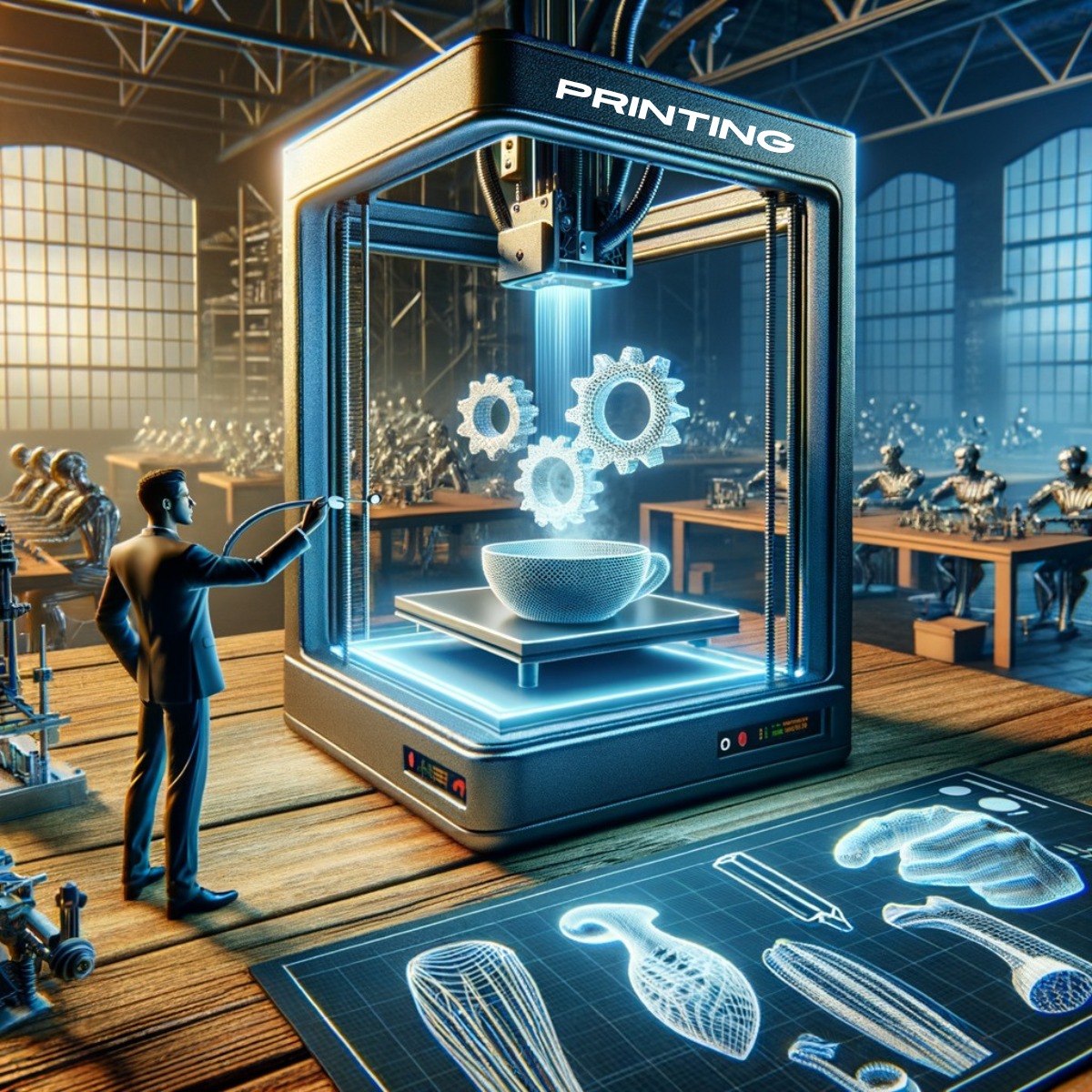The printing industry experienced a rapid evolution, fundamentally changing the panorama around it and creating new horizons of potential. Continuous transformation has provided new opportunities for the industry, such as product customization, increasing sustainability and improving the efficiency of production processes. Emerging technologies such as 3D printing and augmented reality are fundamentally changing the way we perceive and use printed products.
3D printing and the manufacturing revolution
3D printing opened a path to a a new era in manufacturing, with the potential to fundamentally revolutionize product development and manufacturing processes. This technology allows the creation of objects out of a wide range of materials, including plastic, metal and even fabric, through the use of digital models. The future of 3D printing is a promising one, with an estimated global market for this technology of $34.8 billion by 2024, according to a report by research firm MarketsandMarkets.
Sustainability in the spotlight
Sustainability is ranked high on the industry's agenda, due to the increasing pressure to reduce the ecological footprint. Printing companies are increasingly adopting environmentally friendly technologies and practices in their effort to help protect the environment. A recent survey reveals that 83% of consumers are willing to pay a higher price for products printed on sustainable materials. This evolution in consumer behavior underscores the crucial importance of sustainability in the decision-making process, indicating that the adoption of green practices is becoming increasingly imperative.
Custom Printing - The path to customer engagement
As technology advances, custom printing is becoming more affordable. This trend has the potential to revolutionize the way businesses interact with customers. A recent study shows that personalized printing can increase customer engagement by up to 35%. The flexibility offered by custom printing allows companies to easily create innovative products and quickly respond to customer needs. This trend in the field of printing, not only maximizes the customer experience, but becomes an essential tool for companies to effectively meet the demands of an ever-changing market.
Digital versus Offset
In recent years, digital printing has gained popularity, but offset printing remains an important option for specific projects. With the continuous evolution of digital technologies, the border between the two ways of printing is becoming less and less distinct. However, projections indicate a 2.5% annual growth in the digital printing market until 2025, reflecting a growing preference for this printing method. Despite the technological advance, digital printing remains a strategic choice and the industry’s adaptability is essential to respond to market demands.
Security in printing
As technology advances rapidly, concern for the security of printed documents has grown considerably. Companies, aware of the importance of protecting sensitive data and confidential documents, have begun to invest more and more in advanced security solutions. Estimates indicate significant growth in the print security solutions market in the following years. This trend reflects not only the technological evolution in the field, but also the acute need for enterprises to implement robust strategies to guarantee the confidentiality and security of information.
Overall, the printing industry is rapidly adapting to new market demands and emerging technologies. Future trends such as 3D printing, sustainability, custom printing and security are driving factors that will influence the direction of this dynamic industry. Through a proactive and adaptive approach, companies in this sector will continue to develop and innovate in the future.




Comments